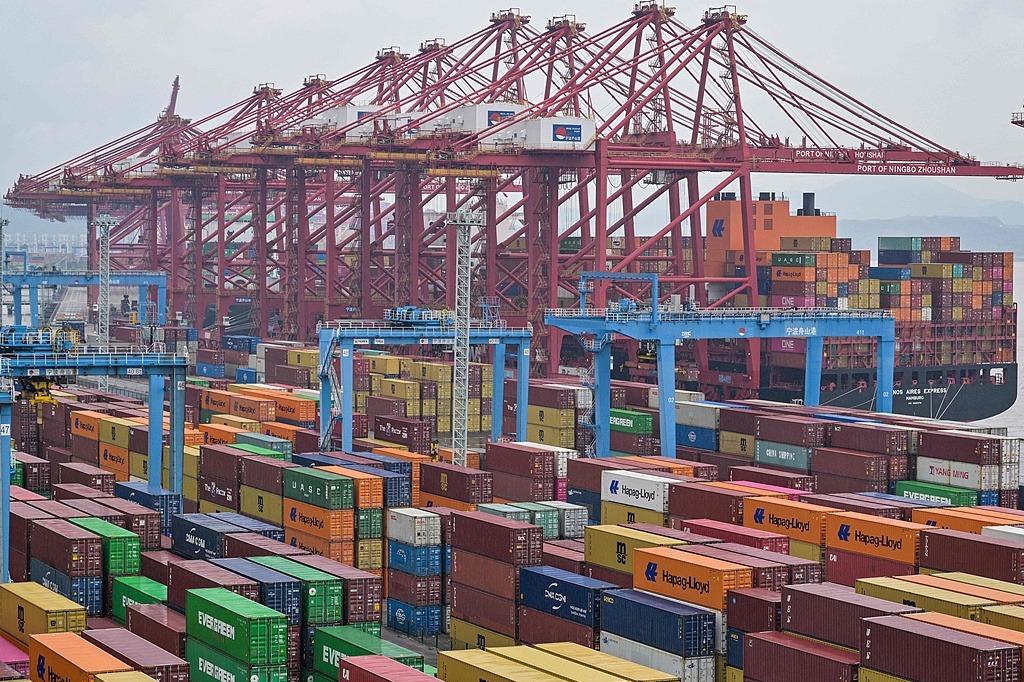Act before it's too late


Conference in Kunming must promote urgent and transformative actions to enhance biodiversity and ecosystem protection
The Intergovernmental Panel on Climate Change's latest report makes it clear that climate change is already a global crisis. This message has been broadly reported and accepted by society. However, a similar message on critical biodiversity loss and ecosystem deterioration has not resonated as widely. But the facts are alarming.
According to the 2020 assessment of the Intergovernmental Science-Policy Platform on Biodiversity and Ecosystem Services, the rate of global change nature underwent during the past five decades is unprecedented in human history.
It is against this background that the 15th meeting of the Conference of Parties to the Convention on Biological Diversity is due to be held in Kunming in Southwest China's Yunnan province, in October. The forum aims at reaching an ambitious Post-2020 Global Biodiversity Framework to galvanize urgent and transformative actions to achieve far-reaching biodiversity conservation outcomes. But implementing the framework will be challenging.
First, awareness and knowledge of biodiversity needs to be strengthened significantly to show that all economic activities depend on and affect nature, which embodies biodiversity and ecosystems. This is illustrated by the fact that an estimated $44 trillion of economic value generation-over half of the global GDP-is moderately or highly dependent on nature.
Most of nature's contributions to people are not fully replaceable, and some are irreplaceable. For example, about 75 percent of global food crops, including some of the most important cash crops, rely on animal pollination. Pollinator loss due to habitat destruction and agriculture chemicals risks global crop output shortfalls in the range of $235 billion to $577 billion per year. Loss of coastal habitats and coral reefs adds to this by reducing fish stocks and coastal protection, increasing the risk from floods and hurricanes to life and property for hundreds of millions of people.
Second, goods and services provided by biodiversity and ecosystems must be valued adequately to enhance their protection. They are part of natural capital and benefit human society. Valuing the goods and services provided by ecosystems can leverage resources more effectively to conserve and sustain biodiversity and ecosystem functions. For example, the Regional Natural Capital Lab, an initiative of the Asian Development Bank, will focus on natural capital accounting and how that, along with synergized policies, can lead to informed investment decision-making for nature-positive benefits. There are also other initiatives to value ecosystem services, such as New Zealand's Living Standards Framework and China's Gross Ecosystem Products that the ADB helped conceptualize. These efforts can contribute to developing a global natural capital accounting system that should be adopted by countries.
Third, it is important to ensure the optimal allocation of resources. Available estimates suggest that direct subsidies that are harmful to biodiversity amount to $500 billion per year. Against this backdrop, the new framework will trigger governments' commitments to redirect, reform or eliminate incentives that are harmful to biodiversity by at least $500 billion per year. Side-by-side, the framework targets increased global financial resources to at least $200 billion annually, with sizable increases devoted to developing countries.
Fourth, country ownership and engagement are essential to successfully implement the framework, which will be driven by actions at the national level that spill over to the subnational, regional and global levels. Therefore, the role of government is critical to these efforts. In this regard, China's experiences in promoting its ecological civilization agenda offer worthy lessons for other countries. Regional initiatives for cross-boundary biodiversity conservation are also important. The ADB-supported Regional Flyway Initiative, which aims to restore and protect the critical habitat of the East Asian-Australasian Flyway to preserve the wetland ecosystems and the services that they provide to millions of migrant birds every year is a good example.
Last, synergies are important for impact. Biodiversity and ecosystem functions and services are at the core of the Sustainable Development Goals on water and sanitation, climate action, life below water and on land. However, biodiversity loss and damaged ecosystems will undermine progress toward the SDGs on poverty, hunger, health, water, and cities. Moreover, biodiversity loss and climate change are inextricably connected, and must be addressed jointly. To that end, resolving the trade-offs between climate change and biodiversity is a challenge, as some climate change mitigation and adaptation actions may negatively affect biodiversity through damage to habitats. Large-scale expansion of bioenergy and renewable energy infrastructure, including big dams and sea walls, illustrate the challenge.
While the targets of the framework, such as the Paris Agreement, are not binding for businesses, they signal vital global ambitions and the prioritization of key activities to fight biodiversity loss. Reversing biodiversity loss now will be less costly than delaying these efforts. Actions should be taken before it is too late.
The author is a senior project officer at the Asian Development Bank's Resident Mission in the People's Republic of China. The author contributed this article to China Watch, a think tank powered by China Daily. The views do not necessarily reflect those of China Daily.

































